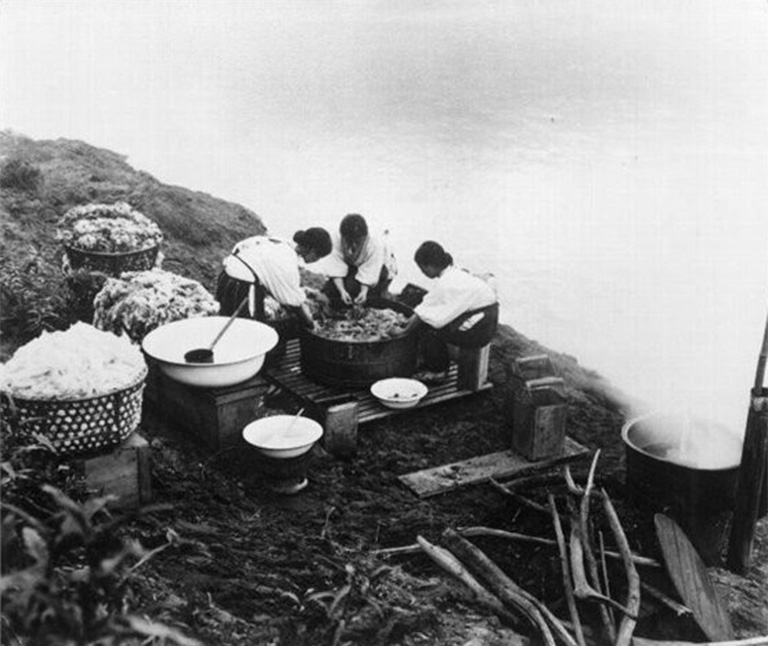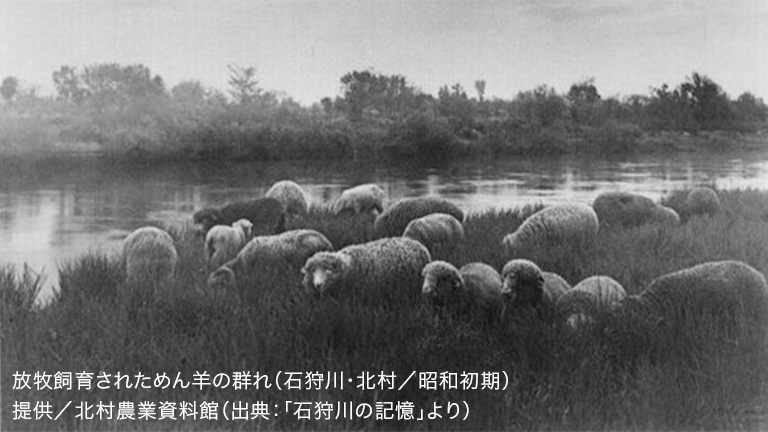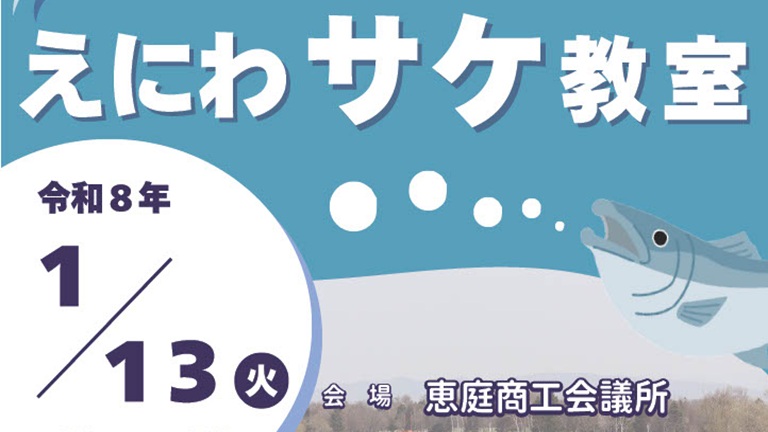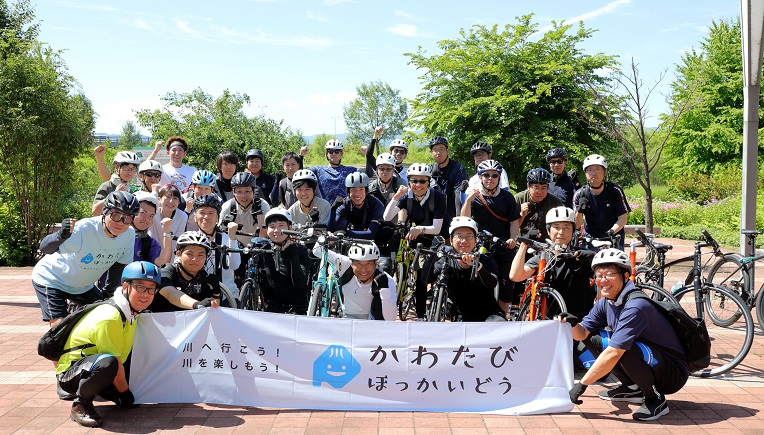In Kita village, Sorachi county (currently Kita village, Iwamizawa city), Yuji Kitamura from Yamanashi Prefecture, the origin of Kita village’s village name 1897, opened the Kitamura farm and developed a wide range of businesses such as butter manufacturing. After that, Yuji’s younger brother, Bin Kitamura, left an excellent track record in raising cotton sheep, and the government encouraged raising cotton sheep nationwide.
The quality of wool produced at Kitamura Farm is high, and it will become the main product of the farm. In 1924, Japan’s first purely domestic homespun (*) was made, and it dominated the top ranks at many competitions. Along with Homespun, the name “Kitamura” has grown to be known all over the country.
* Homespun: A hand-woven woolen fabric with thick threads. It is said to have originated in England.

People washing the cut wool (Ishikari River / Kita village / early Showa period)
Provided by / Kitamura Agricultural Museum (Source: “Ishikarigawa no Kioku”)
As sheep breeding became more widespread, various recipes were devised to utilize wool and its meat. The “Mutton Cooking Method,” published by the Kitamura Cotton Sheep Livestock Association in 1924, introduces a recipe similar to modern Jingisukan, in which lamb is soaked in a sauce and grilled on a shichirin.
The earliest time when some recipe was introduced as “Jingisukan Nabe” was around the early Showa period. However, it is worth noting that similar lamb dishes have been eaten in Kitamura since earlier times.














